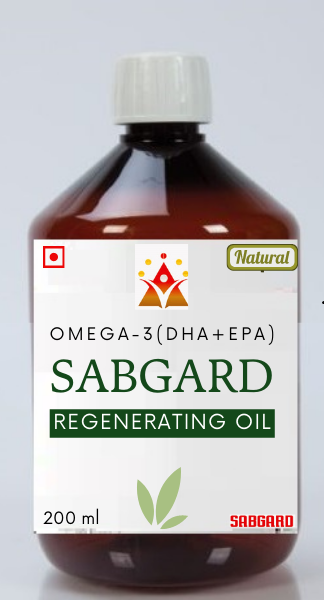
What is Omega 3? What are the benefits? What should be the ratio to maintain?
Omega-3 fatty acids are a type of essential fatty acids that are crucial in maintaining good health.
Omega-3s are mainly 3 types:
- #Eicosapentaenoic acid (EPA),
- #Docosahexaenoic acid (DHA),
- #Alpha-linolenic acid (ALA).
- The Omega-3 fatty acids benefits are as follows:-
- a: Supporting brain health and cognitive function
b: Reducing #inflammation in the body
c: Improving heart health by lowering triglycerides, - d: Reducing blood pressure, and decreasing the risk of heart disease
- e: Supporting eye health
- f: Reducing symptoms of #depression and anxiety
Therefore omega-3 consumptions are much more essential, else one will experience symptoms such as dry skin, poor memory, mood swings, and joint pain.
The recommended ratio of omega-3 to omega-6 fatty acids in the diet is 1:1 to 1:4. However, the typical Western diet has a ratio of around 1:20, which may contribute to chronic inflammation and health problems.
It is very important to consume a balanced diet that includes sources of omega-3 fatty acids such as:
- Non-Vegetarian Sources: Fatty fish (such as Tuna, Herrings, salmon, sardines, mackerel, and Trout),
- Vegetarian Sources: Spinach, flaxseeds, chia seeds, and walnuts. Canola Oil
If you cannot able to consume enough omega-3s in your diet then you should consider taking a high-quality omega-3 supplement.
{NB: Please check our next Blogs about detailed Sources: As per our source of information Vegetarian sources only give Alpha-linolenic acid (ALA) so it needs to convert to EPA and DHA, therefore the direct taking of Fatty fish for Omega-3 is needed}
Omega-6 availability. Do you need to reduce its consumption?
#Omega-6 fatty acids are also essential fatty acids and play an important role in the body. However, excessive consumption of omega-6s can promote inflammation, which can contribute to a range of health problems such as heart disease, diabetes, and arthritis.
Omega-6 fatty acids are abundant in many common foods such as vegetable oils (such as Soybean, Corn, and Sunflower), nuts, and seeds. While omega-6 fatty acids are important for health, it is important to maintain a balance between omega-6 and omega-3 fatty acids in the diet.
The optimal ratio of omega-6 to omega-3 fatty acids in the diet is thought to be around 1:1 to 4:1. However, the typical Western diet tends to be much higher in omega-6s than omega-3s, with a ratio of around 15:1 to 20:1.
For a better balance of Omega-3 vs Omega -6, you need to reduce your consumption of processed and fried foods, which are often high in omega-6s. Instead, try to focus on incorporating more whole foods into your diet, such as fruits, vegetables, whole grains, and lean protein sources, which are generally lower in omega-6s.
Therefore, to maintain the overall balance of Omega-3 & Omega -6 you need to increase your consumption of omega-3-rich foods.
To Buy Omega-3 from Amazone Click below :
Permalink: https://sypta.com/omega-3-and-omega-6-balance/
#Omega-3fattyacids, #Omega-3, #Omega-3fattyacids, #Omega-3benefits, #Omega-3 sources, #Omega-3supplements, #Omega-3richfoods #Omega-3health, #vegan Omega-3sources, #non-vegetarianOmega-3sources, #plant-basedOmega-3
#ratioofOmega-3toOmega-6 #ratioOmega-3toOmega-6 #ratioOmega-3to-6, #Omega-6


[…] What is Omega 3. What are the benefits. What if no Omega-3. What should be it’s ratio? […]
[…] Permalink: https://sypta.com/omega-3-its-benefits-and-ratio/ […]